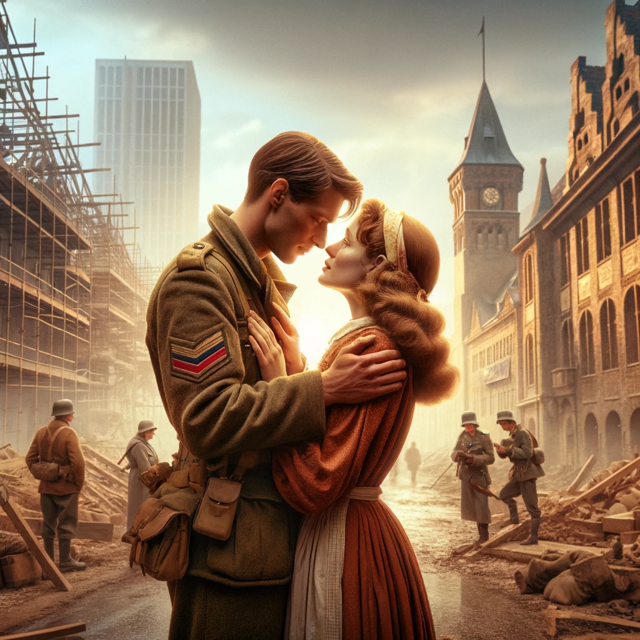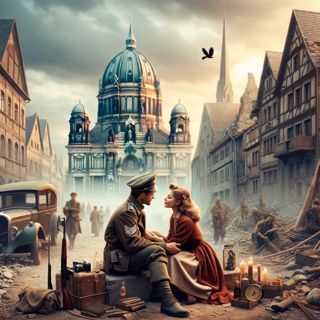January 2024
Discover the untold love stories of the post-World War II era in The Electrician and the Seamstress, where the unlikely romance between Allied soldiers and German women unfolds. Amidst the ruins and recovery of war-torn Germany, these cross-cultural relationships bloomed, defying the scars of war and societal skepticism. Journey through the intimate narrative of Martha's transformation from a caretaker in Kiel to a British soldier's bride, and witness how Karla's bond with her friend anchors the story. This article delves into the profound impact of these unions, not just on the lives of those directly involved but on the cultural fabric of nations. It's a celebration of love's power to transcend boundaries and a poignant reminder of the resilience that emerges even in the aftermath of conflict. Read on to be captivated by tales of love, adaptation, and the enduring legacy of these wartime romances.
Last updated 18 months ago
Will publish on 06/07/2026
Love Across Cultures Post WWII
By Monica Granlove

In the aftermath of World War II, a poignant and often overlooked chapter in history unfolded, where American and British soldiers forged deep connections with German women. This remarkable narrative, blossoming amidst the ruins of war, would go on to shape the destinies of countless families and offer a beacon of hope in an era marked by turmoil and uncertainty.
Following the devastation of WWII, Allied soldiers, predominantly from the United States and Britain, found themselves stationed in the war-torn landscape of Germany as part of the occupation forces. Amid the daunting challenges of reconstruction and recovery, many soldiers encountered German women who not only captured their hearts but also laid the foundation for a post-war love story.
In the novel The Electrician and The Seamstress, Karla, the protagonist, shared a deep bond with her best friend Martha. Despite being a minor character, Martha's friendship played a crucial role in both the novel and Karla's real life, proving to be a source of strength during challenging times. Martha and Karla explored new cafes that emerged during the reconstruction phase. Martha's encounter with a British soldier during the British occupation of Kiel, Germany, added a unique dimension to their post-war experiences, culminating in her marriage to the British soldier just after the war—an inspiring celebration of hope.
The relationships between Allied soldiers and German brides faced societal skepticism and numerous challenges, including communication barriers, cultural differences, and the lingering scars of war. However, these couples defied conventions and embarked on a journey of love that transcended national boundaries. In 1958, Edith, Karla’s oldest daughter, met her future husband—an American soldier stationed in the area.
As soldiers completed their tours of duty, the choice of leaving their German brides behind or bringing them to their home countries presented a complex dilemma. Navigating bureaucratic hurdles and legal complexities, these couples were driven by the desire to build a life together, prompting them to navigate intricate immigration processes.
The post-war era witnessed the assimilation of German brides into American and British societies. From learning new languages to adapting to unfamiliar customs, these women faced numerous adjustments. However, the resilience of these couples allowed them to build successful lives, establish families, and contribute to the cultural diversity of their adopted countries.
The marriages between Allied soldiers and German brides left an enduring legacy, as the descendants of these couples carry a unique blend of cultures, serving as bridges between nations. The stories of love that emerged in the aftermath of war stand as a testament to the enduring power of human connection, even in the face of adversity.
In summary, the post-WWII relationships between American and British soldiers and German brides exemplify the transformative power of love. By overcoming the challenges of war and reconstruction, these couples forged enduring connections that contributed to the rich tapestry of post-war history. Their stories inspire us to recognize the potential for love and resilience even in the most challenging circumstances.


